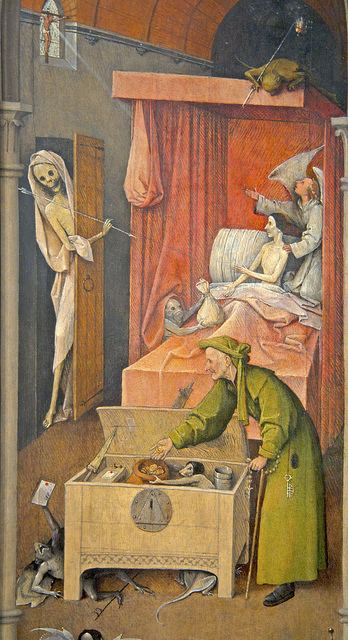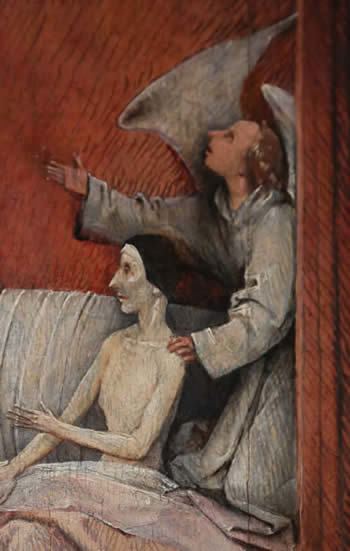Year 1494 or later Dimensions 93 cm x 31 cm Created 1494–1516 | ||
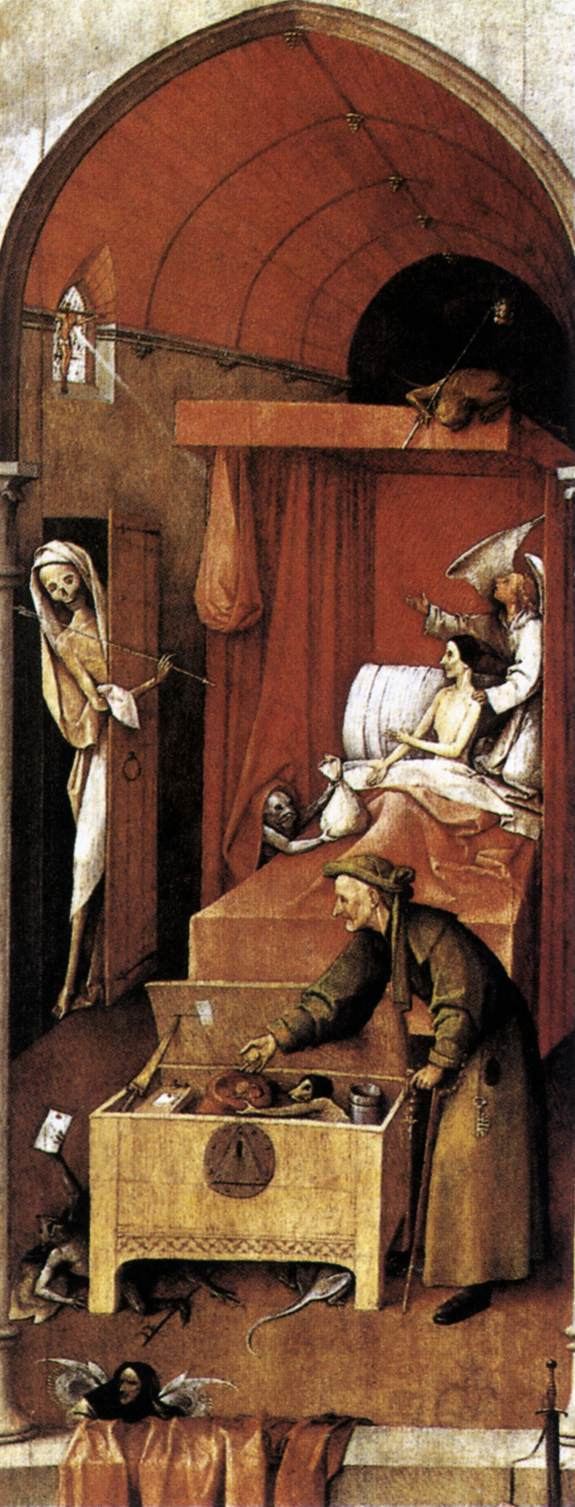 | ||
Media Paint, Panel painting, Oil paint Similar Hieronymus Bosch artwork, Drawing | ||
death and the miser painted by hieronymus bosch
Death and the Miser is a Hieronymus Bosch painting. It is currently in the National Gallery of Art in Washington, D.C. The painting is the inside of the right panel of a divided triptych. The other existing portions of the triptych are The Ship of Fools and Allegory of Gluttony and Lust, while The Wayfarer was painted on the external right panel.
Contents
- death and the miser painted by hieronymus bosch
- death and the miser hieronymus bosch audio experience by brian sottosanti
- References

Death and the Miser belongs to the tradition of the memento mori, works that remind the viewer of the inevitability of death. The painting shows the influence of popular 15th-century handbooks on the art of dying (Ars moriendi), intended to help Christians choose Christ over sinful pleasures. As Death looms, the miser, unable to resist worldly temptations, reaches for the bag of gold offered by a demon, even while an angel points to a crucifix from which a slender beam of light descends.
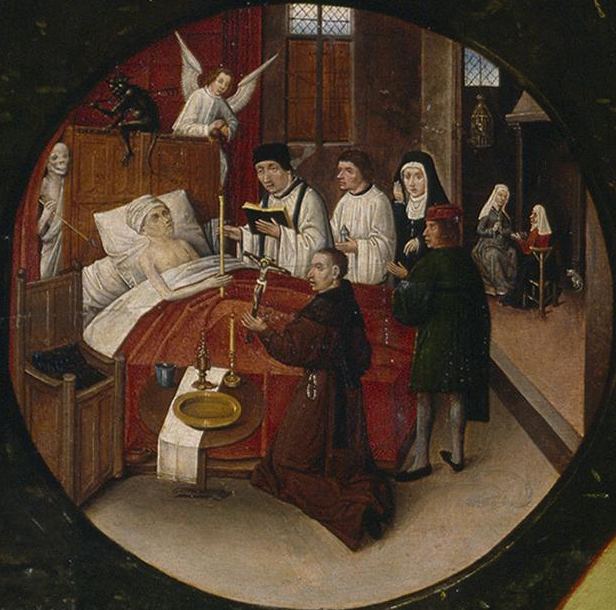
There are references in the painting to dichotomous modes of life. A crucifix is set on the only (small) window of the room. A thin ray of light is directed down to the bottom of the large room, which is darkened. A demon holding an ember lurks over the dying man, waiting for his hour. Death is dressed in flowing robes.
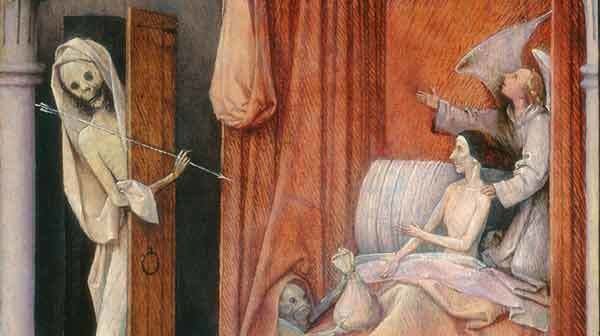
In the foreground, Bosch possibly depicts the miser as he was previously, in full health, storing gold in his money chest (which abounds with demons) while clutching his rosary. Symbols of worldly power such as a helmet, sword and shield allude to earthly follies — and hint at the station held by this man during his life, though his final struggle is one he must undergo naked, without arms or armor. The depiction of such still-life objects to symbolize earthly vanity, transience or decay would become a genre in itself among 17th-century Flemish artists.
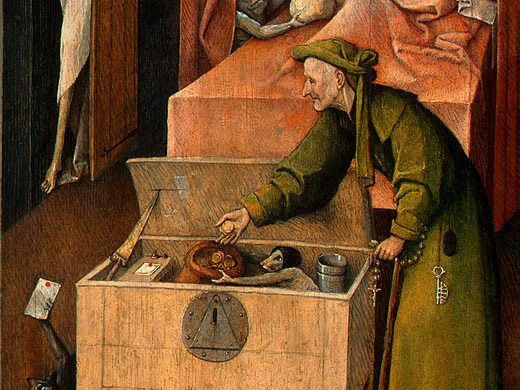
Whether or not the miser, in his last moments, will embrace the salvation offered by Christ or cling to his worldly riches, is left uncertain.

Bosch's familiarity with the visual tradition of the Ars Moriendi can be seen in the top left roundel depicting the death of a sinner in The Seven Deadly Sins and the Four Last Things. There are several points of similarity, such as the figure of Death and the juxtaposition of an angel and devil at the headboard.
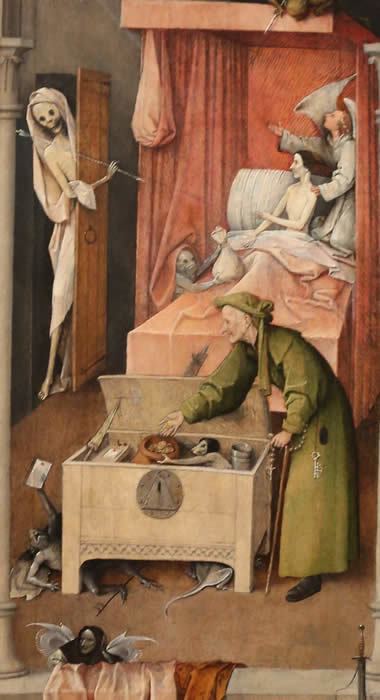
death and the miser hieronymus bosch audio experience by brian sottosanti

